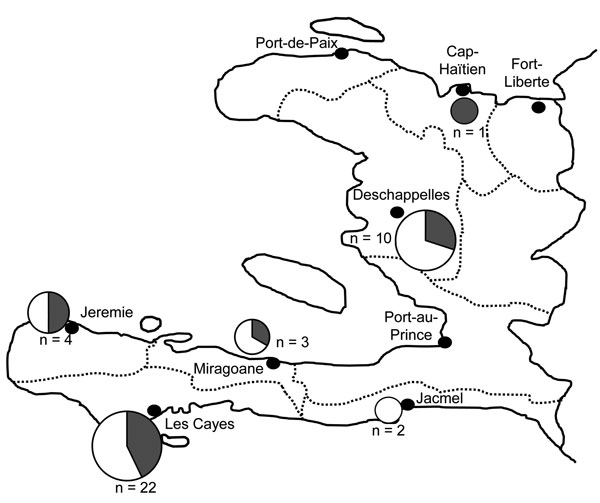Volume 22, Number 5—May 2016
Research
Plasmodium falciparum K76T pfcrt Gene Mutations and Parasite Population Structure, Haiti, 2006–2009
Figure 2

Figure 2. Plasmodium falciparum parasite molecular barcode relatedness by site, Haiti. A total of 42 monogenomic samples were obtained from 6 sites (black dots). Circle sizes represent the number of samples from each site. Highly related samples, with either 24/24 or 23/24 identical single-nucleotide polymorphism positions (>96% barcode identity) are shown in gray circle sections; less related samples (<96% barcode identity) are shown in white circle sections.
Page created: April 13, 2016
Page updated: April 13, 2016
Page reviewed: April 13, 2016
The conclusions, findings, and opinions expressed by authors contributing to this journal do not necessarily reflect the official position of the U.S. Department of Health and Human Services, the Public Health Service, the Centers for Disease Control and Prevention, or the authors' affiliated institutions. Use of trade names is for identification only and does not imply endorsement by any of the groups named above.